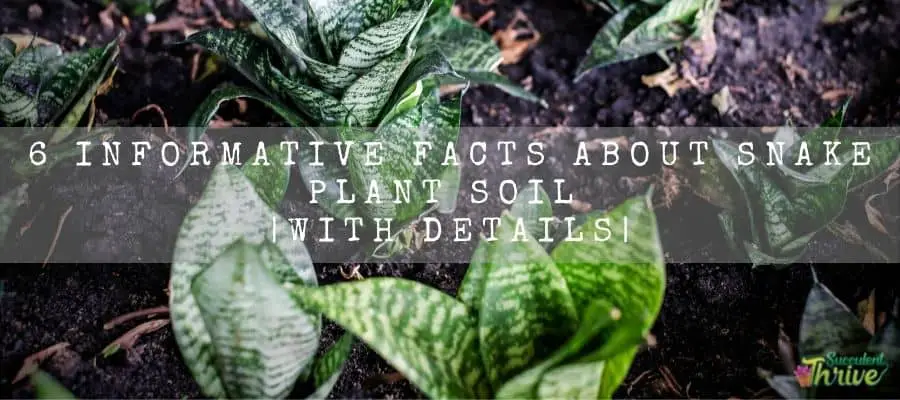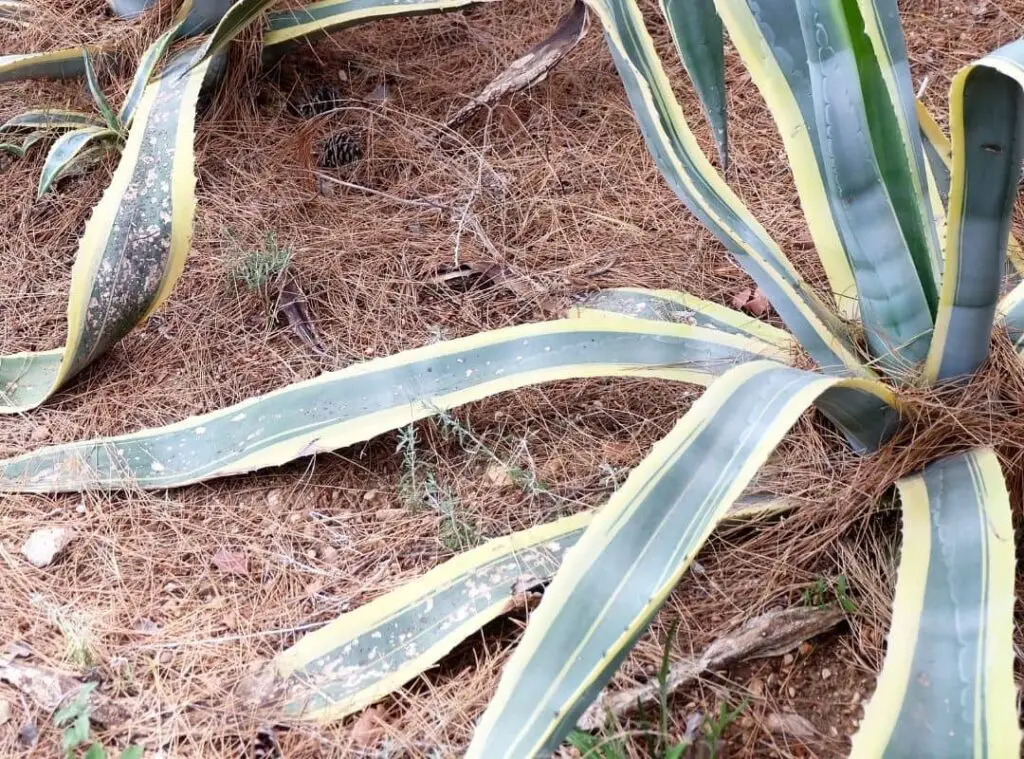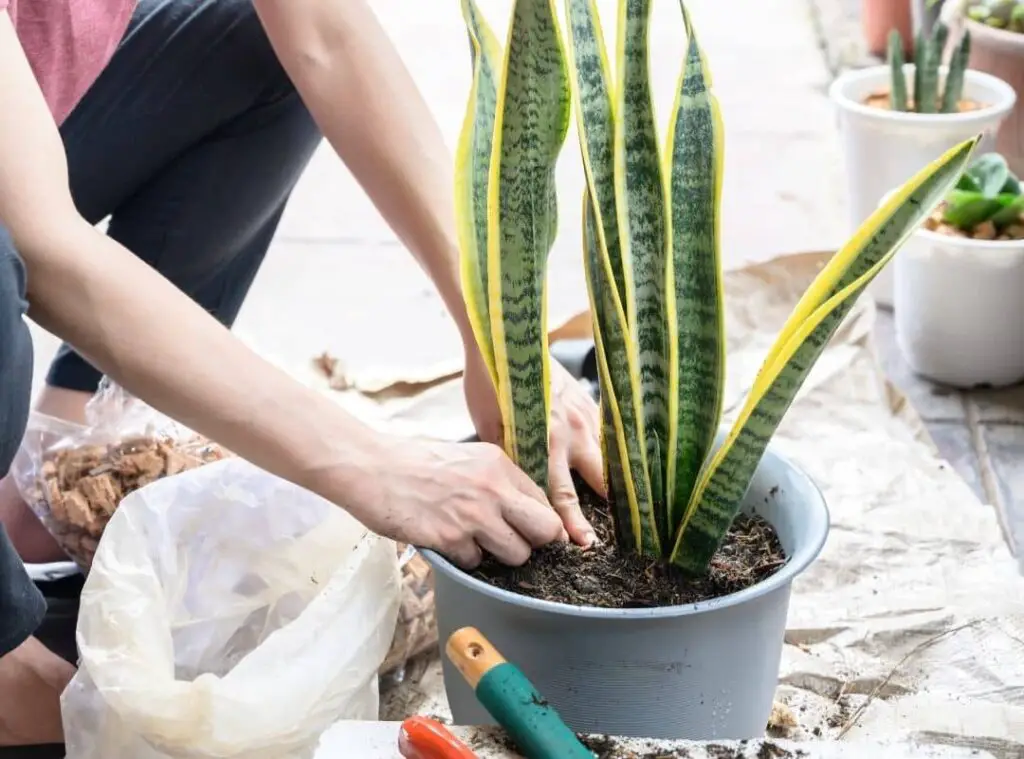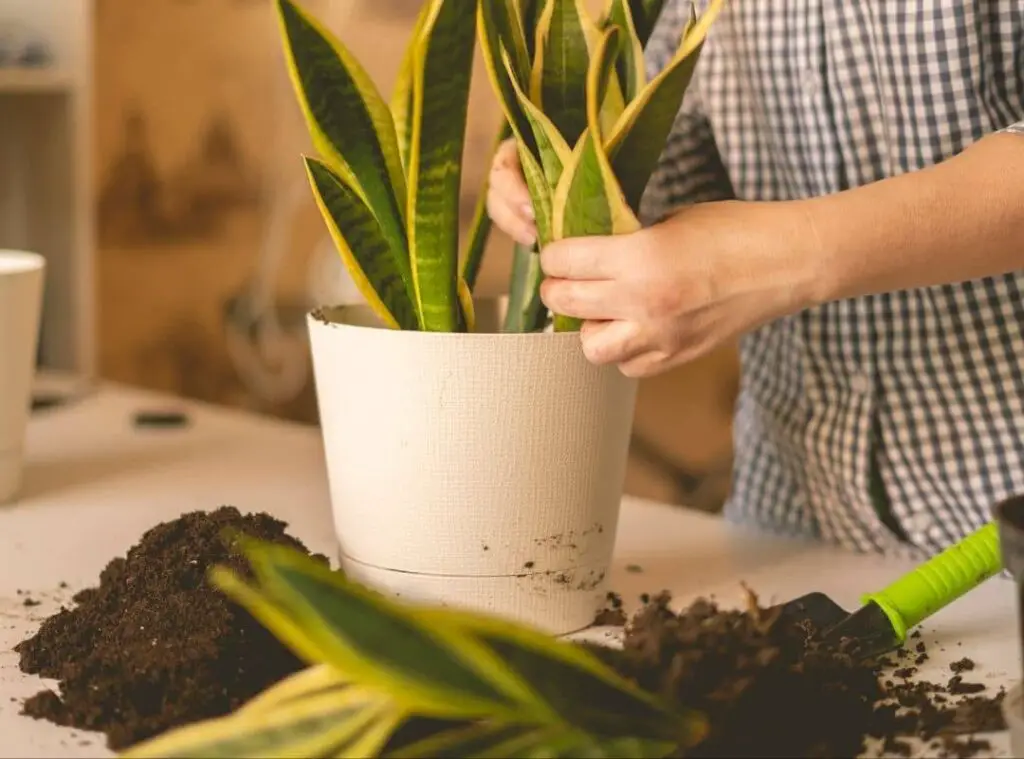Snake plant soil is important for their survival. Ideally, the right kind of soil mix should retain a minimum level of water, have good drainage, encourage soil aeration, and be slightly acidic. So let discuss this further.

Snake plant Soil pH
Soil pH varies on the iron combination of the soil. We could categories irons as positively charged types and negatively charged types. Examples for positive ions are such as Sodium, aluminum, Calcium, and iron. On the other hand, elements such as chloride, sulfate carbonates, and bicarbonates are negatively charged elements.
In terms of best pH for the snake plant soil should be 5.5-7.5. In other words, it has to be neutral to slightly acidic. Having said that, ph. figure ranges from 4.5-8 would suit best for snake plants.
Snake plant Soil nutrient
It is important that your right soil mix contains the most important elements such as Nitrogen, Phosphorous, Potassium, calcium, and magnesium.
If you wish to have an optimum soil condition, you need to make sure that it contains 80-159 ppm of Nitrate-Nitrogen, 8-13 ppm of phosphorus, 120-199 ppm of potassium, 200-349 of calcium and 70-124 of Magnesium.
Snake plant Soil moisture level
It is crucial that you maintain a correct level of moisture in the snake plant soil mix. To check that, you could utilize a moisture sensor and check on the moisture level of the soil.
What you have to do is just place the moisture sensor tip a few inches deep in the soil and the gauge on top. That will indicate the moisture level precisely.
General practice is to water the snake plant when the meter reads a 1 or even less amount prior to watering.
After watering, the reading of the meter should be 8 or 9.

Different types of soil for snake plant
Organic soil
You could start off with organic soil since they have no pesticides and contain no chemicals which have been artificially made.
Organic soil is natural, and it will help for the growth stimulation of the snake plant.
Organic fertilizer such as manure, mulch, worm compost, blood meal, alfalfa meal corn gluten work well on the indoor grow snake plants.
They consist of macronutrients and vitamins and some plant hormones and some amino acids also.
Potting mix
You may choose a specially designed cactus potting mix or a succulent potting mix to grow snake plants.
That is simply since Snake plant is a succulent type. It is something which is too coarse, and it will assist in a better drainage of the water too.
These potting mixes are generally less grainy mixture of sand, peat, and pumice etc.
As such you cannot directly use them and instead of it you need to mix it with the regular potting mix. Best is to use 30 % potting mix into regular soil for snake plants.
Commercial soil mix
You may consider adding some commercial mix for the snake plant so that it could perform well.
To do that you could add pumice or perlite to regular soil which is not fast draining. Furthermore, you could apply a small quantity of rich potting soil which will consequently add extra nutrients to the potting soil.
You may further add some gravel to the base of the pot which will further fasten the water drainage. You could make a soil mix on your own and I would suggest the following mix for you to try.
- 2 parts of coarse sand or perlite
- 1 part peat moss or coconut coir
- 1 part garden soil or potting mix
When you add this to the regular soil mix, ensure that it is a well-draining soil mix. To elaborate more on the aforesaid elements,
Perlite – it is more like a volcanic rock which is porous and lightweight. It could help the water to move through faster and further help for good aeration of the soil too and consequently it will avoid the root rots too.
Peat moss – it is fluffy and has a lightweight structure which looks like soil. It would be useful if you wish to enhance the texture of the soil and the consistency as well.
Since snake plants would love to grow in slightly acidic soil as such this would be ideal. Good alternative for peat moss is coconut coir.
Coarse sand – this is also helpful for fast draining of the water as well as for good aeration in the soil too. Avoid using these in large quantities and the best is to use 10%-15% of these. Grave is another alternative for this.

Guide to plant snake plant
Choose correct pot
When you select a pot to grow snake plants, you need to ascertain that it has an adequate number of draining holes.
Ideally a terra cotta pot would suit them best for this requirement.
When you grow snake plants in these pots, it will allow the plant to wither faster than they do in plastic containers.
Read More: How To Choose Correct Snake Plant Pot Size | And 5 Pot Materials |
Prepare the soil
You may arrange a fast-draining potting mix as aforesaid. You may proceed with cacti mix or even succulent mix would be the best.
Plant the snake plant
After you have selected the pot and arranged the soil mix, you could go ahead and place the snake plant in the pot.
When you locate it, make sure that you locate it under bright indirect sunlight. If you wish you may locate it in a shady place also, however you will not be able to witness its natural colors and vigorous growth then.
Moreover, locate the plant in a place where it gets a temperature of 50 degrees Fahrenheit (10 degrees Celsius). Do not expose your plant for winter conditions.
Diseases hidden in soil
Mold
If you spot any white mold spreading in the soil, the root cause for that would be a fungus.
Factors such as over watering, poor drainage, inappropriate potting mix would attribute them for this condition.
When they grow, they tend to depend on the decaying organic substances in the soggy soil.
To treat this, you need to clean up the mold. You could simply scrape it from soil in most cases.
After that leave the soil mix somewhere it could wither. Still if you can’t overcome them, you should consider repotting them.
Apart from that, they could lead the plant to root rot too. To overcome this, you need to water them consistently without over watering them.
Moreover, if you have not provided a pot which lacks adequate drainage, it could also affect the formation of mold in the soil.
Finally, make sure that you select a potting soil which is well draining. It should include elements such as peat moss, composted plant material such as bark, and either sand or perlite as they would fasten the drainage of the soil and it will obstruct the mold getting formed in the soil mix.
Bugs
There are several bug types which could harm the soil of snake plants and they are as follows,
- Fungus Gnats
- Scale
- Spider Mites
- Aphids
- Whiteflies
- Mealybugs
- Thrips
To treat them, you could dry the soil first. Avoid watering them and make sure that you keep the first 1-2 inches of the soil surface dry.
In addition to that you may use Neem oil to remedy them too. It could act as a preventive method as well and it is a natural way of getting rid of these bugs.
Moreover, keep inspecting your plant as well as the soil, to identify if there are any disorders in the soil, so that you could rectify them in advance and treat them accordingly.

Related questions
What kind of soil do snake plants like?
Snake plants wish to grow in a fast-draining soil mix since they are quite vulnerable for roots. As such best is to utilize a potting mix without any soil which will consequently help for sufficient drainage.
Can I use orchid mix for snake plants?
You may use an orchid mix to grow snake plants. It could also be very effective in providing adequate drainage for the plant.
Can I use cactus soil for snake plants?
It would be ideal if you could grow snake plants in cactus soil mix. The specialty of these soil mix is that they do not store water for a longer period and are very productive in terms of drainage.
Conclusion
Snake plant roots are quite responsive towards the soggy and damp condition of the soil. If you leave your snake plant to sit in damp and soggy conditions for too long, it will cause root rot to take place on the plants.
It is necessary that you provide a well-draining soil mix more importantly though you can plant them in gritty and low fertilized soil. That is simply because snake plants cannot survive in soil which retain moisture. As such you should grow them in a well-draining soil mix.
Further, once you provide a soil mix which encourages a good aeration in the soil mix, it will stimulate the root development. In addition to that, they will lessen any potential risk of fungal growth and any other pest invasion in the soil as well.
Apart from the above, I would suggest that a right soil mix for snake plants should consist of the following as well.
It should be enriched with higher levels of inorganic elements such as gravel, pebbles, granite coarse, perlite and with pumice. The special characteristic about these elements is that they could dry up rapidly.
Insignificant quantities of organic elements should also be included in a right soil mix. They are such as compost, tree bark or even peat moss. Less than 25 % of these materials would be ideal to have in a right soil mix.
In terms of best pH of the soil should be 5.5-7.5. In other words, it has to be neutral to slightly acidic. Having said that, ph figures range from 4.5-8 would suit best for snake plants.
Read Next: All About Snake Plant Roots And Its Problems | 7 Helpful Facts |
